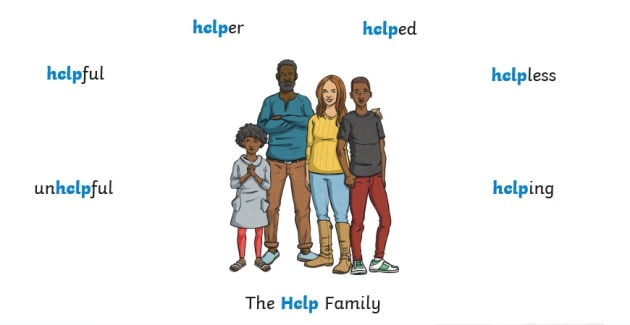38 Lexical Roots, Affixes, and Word Families
Lexical Roots
Lexical roots are groups of letters that have meaning in their most basic form. Many English words contain roots that come from Greek and Latin. Knowing word roots and their meanings is useful because it provides the skill to decode the meaning of unfamiliar words in a variety of situations.
While word roots are the core that determines the main meaning, they are unable to stand alone as independent words.

Affixes
Prefixes and suffixes are additional groups of letters that appear at the beginning (prefix) or end (suffix) of lexical roots. These blocks of letters usually have Greek or Latin origin. Like the roots, prefixes and suffixes cannot function independently as separate words. However, they fulfill two important functions:
- They form different parts of speech, i.e., nouns, verbs, adjectives, or adverbs.
- They may alter the meaning of the lexical root.
Therefore, familiarity with Latin and Greek lexical blocks (roots, prefixes, and suffixes) can assist you in deciphering the meanings of unfamiliar English words.
Word Families
Word families are groups of words that share the same lexical root but contain different prefixes and/or suffixes attached to the same root. These words are different from one another even though they share the same root.

Word families are also useful to improve your academic vocabulary. By knowing the meaning of the root and the part of speech that the suffixes or prefixes convey (noun, verb, adjective, or adverb), you can expand your vocabulary repertoire.
Word Families
Root |
Noun |
Verb |
Adjective |
Adverb |
analy – |
analysis |
analyze |
analytical |
analytically |
creat – |
creation |
create |
creative |
creatively |
employ- |
employee or employability |
employ |
employable |
——– |
succe- |
success |
succeed |
successful |
successfully |
surpris- |
surprise |
surprise |
surprising |
surprisingly |
For more information about parts of speech, roots, prefixes, and suffixes, check item # 2 about word structure: https://wisc.pb.unizin.org/esl116/wp-admin/post.php?post=57&action=edit
The content on this PB page has been paraphrased from the websites below. Ideas have been blended to configure this information. For specific details, and to learn more about these topics, visit:
- https://www.twinkl.com/teaching-wiki/word-family
- https://www.turito.com/learn/english/greek-and-latin-root-words
- Making Connections 4; Williams and Vittorio, 2016

